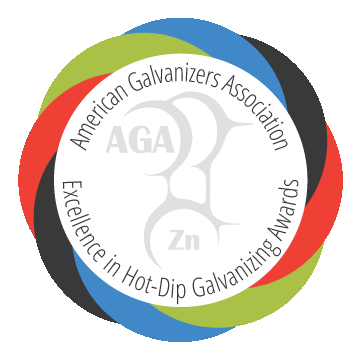Protective Stadium: UAB Blazers
Birmingham, AL United States | 2021
 2022
2022
Menu • Quick Links • Search
The 1997/98 season for the Denver Broncos culminated in the team’s 1st Super Bowl championship after defeating Brett Favre and the Green Bay Packers in a thrilling 31-24 victory. Finally, after 4 Super Bowl defeats, the Broncos could at long last, hoist the Lombardi trophy.
The timing of this victory couldn’t have been better as there was much more at stake for the Broncos than just a championship. The original Mile High Stadium and Broncos home venue since the team’s inception in 1960 was nearing its end as a viable host for NFL games.
Our design team recognized a painted pipe-rail would be more easily scratched over time.
The Broncos would require voter support to approve extending an existing tax to offset $270 million of the $400 million needed to construct the new stadium, with then Broncos owner; Pat Bowlen picking up the balance. The failure of similar tax proposals to build new stadiums in other major cities had resulted in the relocation of NFL franchises. Fortunately, and certainly aided by the Superbowl victory, the measure passed in November of 1998, setting the construction wheels in motion to build the new football stadium.
The design/build team of Turner Construction, Empire Construction, Alvarado Construction, and HNTB Architects in association with Fentress Bradburn Architects and Bertram A. Bruton Architects was assembled to make the new stadium vision a reality.
This massive project included more than 500 tons of steel handrail and safety guardrail to help guide and keep safe the 76,125 fans entering and exiting the stadium. Protecting the exposed steel railing from corrosion was an important decision for the design team. With the common understanding any exposed, painted railing would require periodic maintenance, the design team was also considering the wear issues associated with a scratching effect.
As explained by Lanson Nichols; HNTB’s Senior PM for the project, “Our design team recognized a painted pipe-rail would be more easily scratched over time.” The millions of hands wearing rings, watches, carrying phones, keys etc., would hasten the wear of a painted coating and thus require more frequent touch ups. Ice melt chemicals used to keep the walkways and stairs in the stadium free of ice was another corrosion consideration.
Rather than projecting the extensive costs associated with maintaining painted rails, HNTB Architects began considering more durable options including hot-dip galvanizing (HDG). At that time HDG coatings were primarily specified for industrial applications and less often considered for sports/entertainment or similar high-profile venues.
Hot-dip galvanizing is a zinc coating that forms as the result of a chemical reaction when carefully prepared steel is dipped into a kettle of molten zinc. The exceptionally adhered HDG coating provides a bond strength that can reach 3,600 psi. The zinc and iron alloy layers that form on all surfaces of the dipped steel are actually harder than the base metal itself, thus providing the desired durability for this challenging application.
HNTB realized the appearance of the HDG coating was more in keeping with the design intent and the color scheme on the structural steel, lighting racks, upper bowl and other areas of the stadium. The HDG option checked so many boxes that selecting and specifying HDG for all the stadium railing made perfect sense.
Turner Construction broke ground in August of 1999 and construction of the new stadium was completed in August of 2001. Invesco acquired the original naming rights for the stadium and Invesco Field at Mile high opened on August 11, 2001.
Fast forward 21 years. After two name changes (now Empower Field at Mile High), hundreds of Football games, concerts, motor sport events etc., the maintenance free HDG coating has met all expectations. A random spot check inspection at Empower Field in December 2022 confirmed the 22 year old HDG coating is in good condition and well capable of continuing to provide unmatched protection for many seasons to come.
The maintenance savings provided by the decision to galvanize this railing over two decades ago is several times greater than the original cost to galvanize. The forward thinking of design firms like HNTB and the proven track record of galvanized coatings in countless industries has brought hot-dip galvanizing to the forefront for consideration in many more high-profile exposed steel applications.
| Desc | Read. 1 | Read. 2 | Read. 3 | Read. 4 | Read. 5 | Avg. |
|---|---|---|---|---|---|---|
| Area #1 | 3.2 | 3.2 | 4.1 | 3 | 3 | 3.30 |
| Area #2 | 7.9 | 5.1 | 5.2 | 5.6 | 4.8 | 5.72 |
| Area #3 | 2.9 | 3.1 | 3.4 | 3.4 | 3.1 | 3.18 |
Lifetime Achievement
Excellence Award Winners
Lifetime Achievement
Recreation & Entertainment
Industrial/Urban
Denver, CO United States
Aesthetics, Coating Durability, Corrosion Performance, Ease of Specifying, Initial Cost, Life-Cycle Cost, Prior HDG Experience, Quality of HDG, Sustainability, Turnaround Time
Pipe Handrail, Flat Bar Handrail and Flat Bar Guardrail
Steel: 500
HDG: 500
Matt Shine
Denver Broncos Football Club
Lanson Nichols
HNTB Architects
Gene Fatur
Turner Construction
AZZ Galvanizing - Denver
Thank you! Your vote has been accepted.